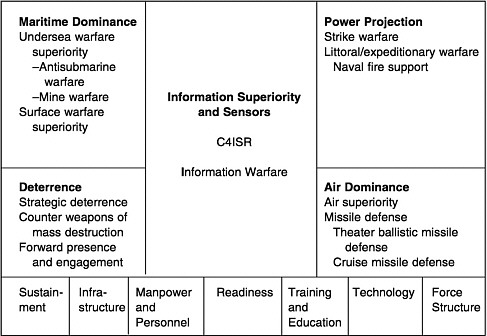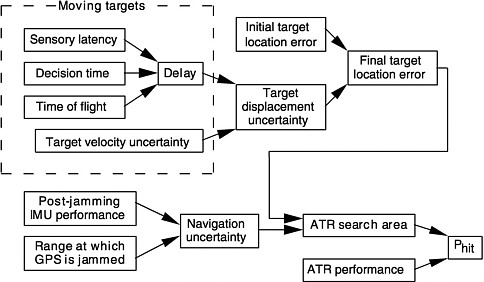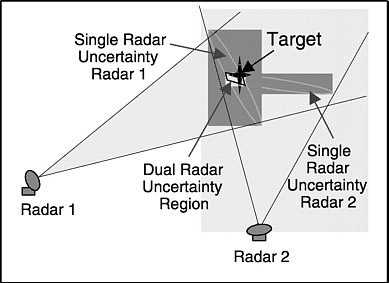and opposition activity from a variety of information sources both within and outside the naval forces, and taking necessary action, command relationships will have to adapt to the exigencies of operations. Achieving the required speed of action will require flattening of the command hierarchy at certain times and preserving the familiar hierarchy at others. Such profound transformation can only be effected through continuous commitment, attention, and guidance from the top levels of naval force leadership.
1.2.3 Recommendations Regarding the Transformation to Network-Centric Operations
-
Network-centric operations planning, design, and management should emphasize mission success in the network-centric operations mode, not the physical aspects of the C4ISR network per se.
-
The Department of the Navy and its component Services should take a mission-driven, integrated approach with a total-system view to achieve success in transforming the naval forces from platform-centric to network-centric operations. Specific steps to achieve this are included in Section 1.5.
-
The CNO and the CMC should give the Navy Warfare Development Command and the Marine Corps Combat Development Command the responsibility of working together to devise joint concepts and doctrine for network-centric operations for the naval forces as a whole, and to incorporate joint and coalition aspects of such operations in their concepts.
-
The spiral development approach involving the design-test-design of new software and equipment and model-test-model to devise new joint concepts and their testing in fleet and Marine units should be adopted as a standard mechanism for achieving network-centric operations systems.
1.3 INTEGRATING FORCE ELEMENTS: A MISSION-SPECIFIC STUDY OF POWER PROJECTION
1.3.1 Mission Orientation
Network-centric operations systems comprise a number of subsystems, each designed and engineered to accomplish a military purpose. These subsystems are networks of components such as sensors, weapons, command elements, and mission-specific communications, tied together by the NCII. First it is necessary to understand the characteristics of the components and the interdependencies of component performance and subsystem performance.
The four missions of the U.S. Navy are illustrated in Figure 1.2, which summarizes the major components in the Navy's integrated warfare architecture (IWAR) process. The subsystems for strike and fire support missions against land targets are used here as example subsystems to accord with the selected

FIGURE 1.2 Naval forces integrated warfare architecture (IWAR) structure. The four fundamental naval force missions are listed in the side columns; all the remainder are essential for carrying them out. (Information superiority and sensors are enablers of all four missions.)
emphasis on the power projection mission described in the introduction to this overview and integrated into the detailed discussion in Chapter 3.
1.3.2 Critical System Needs
Developing the capability for effective power projection by the Navy and Marine Corps requires that the mission-specific networked operations that have already been developed must be integrated into a comprehensive NCO system structure (see Figure 1.1). Under OMFTS, landing (and supporting) forces expands the battlespace deeper into opposition territory and more widely along the littoral. Elements of the total force may be widely dispersed, requiring that they be firmly and effectively linked through the command and information infrastructure. Barriers to landing, such as minefields and proliferated shoulder-fired surface-to-air missiles, must be overcome rapidly. Greater involvement with civilian populations and the need for rapid closure and success and for minimization of U.S. and collateral casualties increase the criticality of accurate, timely fire support from the sea.
Such performance cannot be achieved unless intelligence, targeting, launch platforms, weapons, and postattack assessment are integrated into a fully connected, robust operational and combat network covering every phase of an expeditionary campaign: preparing the battlespace (strike warfare); landing the force (mine clearing, suppression of enemy air defenses (SEAD), amphibious and air-landed operations); engaging the enemy (fire support to forces on the ground); supporting the force ashore (logistics from sea and land); consolidating the position (civic and psychological operations, defending against counterattack); and handing off to follow-on forces and debarking the Marines who were the landing force. Moreover, since naval force operations involve the simultaneous execution of many activities in many mission areas, networked capabilities in other areas, such as ASW and CEC, must be integrated with those for power projection to achieve network-centric operations for an entire force in a total operational context. Creation of such a force-wide NCO capability requires multiple lines of research and development (R&D), procurement, and organizational effort, including the spiral development process described above.
A critical aspect of power projection is the delivery of accurate and timely firepower from the sea on targets ashore, either for strike or for fire support of Marines (and other forces) there. In the past, weapons were typically developed largely independently of the targeting means and of the means for penetrating defenses to deliver the weapons or to assess their effects once delivered. Network-centric operations will require effective integration of sensors and target acquisition, navigation, and weapons to account for all the factors shown in Figure 1.3 and for multiple feedback loops (which have been eliminated from the diagram for simplicity of illustration).
Some specific component needs are discussed below.
1.3.2.1 Sensors and Target Acquisition
To provide all the information needed for force movement and weapon delivery, sensors will have to be linked, as, for example, distributed radars are used in CEC, electronic intelligence sensors are used to guide SEAD attacks, and the Joint Surveillance and Target Attack Radar System (JSTARS) is used to cue specific weapon-targeting sensors against ground forces. Figure 1.4 illustrates how triangulation can reduce target location uncertainty, provided that the sensor positions are precisely known and the observations are synchronized. Coherent processing of detailed sensor observations can produce identified tracks in situations where no single sensor could perform an unambiguous detection, identification, or track. (Although two radar sensors are shown in Figure 1.4, sensors in different frequency domains that meet the above conditions can yield similar results, or better if they contribute to more positive target identification.)
The importance of real-time fusing of multiple sensor outputs as a driver for the target engagement architecture cannot be overemphasized; it is fundamental

FIGURE 1.3 System factors in delivering firepower ashore without in-flight links to targeting sensors. ATR, automatic target recognition; IMU, inertial measurement unit; GPS, Global Positioning System; P hit, probability of hit.

FIGURE 1.4 Reducing target location error with linked cooperating sensors in common coordinates.
to bringing network-centric operations to the point where U.S. forces meet the enemy. The change in architecture brought about by linked sensors is illustrated schematically in Figure 1.5.
The implications for change in the nature of combat engagement as illustrated in Figure 1.5 are profound. On a single platform it is relatively easy to close the observe, orient, decide, and act (OODA) loop. The challenge in network-centric operations is to enable OODA loops that span space and time as effectively and as rapidly for dispersed force elements as for a single platform, particularly when some sensors may be involved in multiple loops. Any sensor and processor with useful data or information will provide it for anyone who can use it, and the provider may not know who the user is nor the user who the provider is. In the large, however, the operation of the network will remain a closed loop in that information will lead to action, and the mission decision maker —the one who decides what the target is—will have to know that the target was engaged and the outcome of the engagement, as a condition for deciding on further action.
In addition to having to be linked, sensors require continual improvement. Phenomenology in all spectral domains must be explored to exploit multiple sensing paths to the greatest extent possible, both physically and economically, and the quest must continue for automatic recognition of targets that are detected. Automatic target recognition (ATR) will, when it is achieved, aid not only in finding targets in noisy backgrounds but also in defeating the effects of counter-measures to accurate navigation and guidance of weapons. It will also reduce the number of personnel needed for the information-processing parts of the NCII and other information operations.
The use of unmanned aerial vehicles (UAVs) for surveillance; target detection, recognition, and location; and postattack reconnaissance for effectiveness

FIGURE 1.5 Platform-centric versus network-centric architecture.
assessment has been accelerated during military operations in the former Yugoslavia, where UAVs were effectively utilized as joint and coalition-based assets. In addition, the Marines will have a continuing need for short-range, organic UAVs for close-in targeting and to elevate communications relays.
1.3.2.2 Navigation
The problem of Global Positioning System (GPS) jamming will become more acute as weapon ranges and times of flight increase and will have to be overcome. No single technique will make GPS-aided weapon guidance invulnerable to GPS jamming. Practical solutions are likely to involve a combination of cheaper, precise inertial measurement units (IMUs), better target acquisition (including ATR), improved satellite signals and receiver signal processing, directive arrays of antenna elements, and the correlation of multiple signals and sources. Shorter times of flight, achieved by increasing weapon speed, together with improved, low-cost IMUs, can reduce reliance on GPS in the endgame against targets whose locations have been determined a priori. For moving targets being attacked by weapons without update links, time of flight and ATR go hand in hand; shorter delays make the ATR task easier. However, update links to enable the “forward pass” mode, in which weapons are given continually updated target location information after they are launched, are preferred for attacking moving targets, and when such links (and the sensors behind them) are available, ATR becomes much less important. Also, targeting and weapon delivery must be locked in the same reference grid to minimize the error due to target location inaccuracies.
1.3.2.3 Weapons
Naval force weapons are being made more accurate to reduce the need to reattack targets and to reduce collateral damage. The combination of greater accuracy and improved warhead lethality will allow lighter warheads, thereby increasing the range of weapon delivery systems. Weapons will need shorter times of flight to engage fleeting, moving, or highly threatening targets, despite the longer standoff needed to enhance the safety of launching platforms. This will be achievable by launching from advanced aircraft, often at supersonic speed, and by rocket propulsion of air- and sea-launched weapons. For the most effective results in some parts of the strike and fire support missions (e.g., attacks against concentrated targets embedded in population centers or very close to U.S. ground forces), accuracy at the target will have to be improved from the currently specified 13-meter circular error of probability (CEP) to 1 or 2 meters, including target location error. Additionally, the much greater use of precision weaponry will require that, notwithstanding all the weapon improvements called for, weapon costs be reduced significantly to achieve sustainability in a campaign.
In considering the design conditions for an overall subsystem, the performance goals for the components of the subsystem must be traded off against one another on the basis of mission performance. For example, GPS jam resistance can be traded off against ATR performance, guidance accuracy can be traded off against warhead radius of lethality, sensor latency can be traded off against weapon time of flight, and the reduced sensor latency afforded by data links to weapons in flight can be traded off against target location and guidance accuracy.
Network-centric operations require an intimate connection among all the sensing, processing, navigational, and weapon components of the NCO power projection system. Thus, all must conform to the compatibility and interface standards of the NCII. Currently there is no mechanism to coordinate the development of Navy and Marine Corps doctrine and apparatus for joint littoral operations or to coordinate such functions as tracking and network control.
Success in the power projection mission will require that all the areas touched on above and elaborated in Chapter 3, and many of the related areas discussed there, be supported with resources and worked on simultaneously in a fully integrated fashion.
The fielding of improved subsystems will have to be integrated in any NCO system by continually improving subsystems to support the force. Also, the United States may have more than one NCO system or force operating simultaneously in different parts of the world, or even in the same theater of operations. There must be an overall infrastructure the—NCII—with joint and coalition connections, to ensure consistency and interoperability among such far-flung assets, from local tactical networks to major commands, in a global naval force network.
1.3.3 Recommendations Regarding the Integration of Force Elements for the Power Projection Mission
-
In all Department of the Navy planning and acquisition activities, the integration of components for the power projection mission, as well as the integration of the power projection subsystems with the subsystems for other naval force missions such as air and maritime dominance, should be considered as the combination of related parts of a total NCO system, including all the component functions and equipment described above. This includes the naval forces' continuing efforts in the areas of countermine and amphibious warfare, and other efforts.
-
The Department of the Navy should engineer the strike and naval fire support subsystems of NCO systems in an end-to-end fashion. This includes the capability to sense, track, and hit high-priority relocatable or mobile targets with ad hoc or on-call fire and then to assess the results of strike and naval fire support operations in near-real time. Engineering studies and tests should be conducted to define effective, affordable, and balanced major subsystems in all mission areas.
-
System engineering should be performed to determine what combinations of improvements would be required to overcome the effects of foreseeable GPS jamming. Technology base funding and demonstration funding should be made available to determine whether these improvements are attainable.
-
A number of technology directions should be pursued in furtherance of the power projection mission:
-
Diversity of sensor phenomenology and locations should be sought; new sensors should provide for cooperative behavior and participation in ad hoc networks;
-
Organic airborne moving target indicator (MTI) sensors should be considered for guiding precision weapons fired from over the horizon toward moving targets in the forward-pass mode; it should be ensured that closed-loop control in the forward-pass mode is not foreclosed in the design of sensors and weapons or by the concepts for their targeting;
-
Technology for better long-range identification of targets (including ATR) should be sought; in this regard, the Department of the Navy should interact more strongly with Defense Advanced Research Projects Agency (DARPA) programs; and
-
Technology to achieve affordable antennas with adequate gain, bandwidth, and flexibility, and that maintain low observability of the platform, should be sought. A particular challenge is to provide multiple-beam, directional, shared large-aperture antennas on major Navy platforms to serve the needs of the NCII as well as weapon systems.
-
-
The Department of the Navy should move more urgently toward providing the naval forces the capability to acquire data from theater and National sensors.
-
As part of the assignment to NWDC and MCCDC to jointly devise NCO concepts for the naval forces as a whole, the relationship between the two organizations should be formalized and institutionalized to encompass NCO innovation; tactics, techniques, and procedures; and doctrine for operations in the littorals. In particular, they should reach agreement on the need for a family of short-time-of-flight, over-the-horizon weapons and concepts for their targeting.
Many additional recommendations are included in the main body of this report, at a more detailed level than is appropriate for this overview. Those recommendations aim at improving specific sensor and weapon technologies, thereby greatly enhancing the naval forces ' ability to carry out effective sea-launched strike missions and to provide highly responsive, long-range, affordable, sustainable, accurate, high-volume ship- and aircraft-launched supporting fire. These detailed recommendations are as essential to successful achievement of the aims of NCO systems as are the higher-level recommendations included in this overview.








